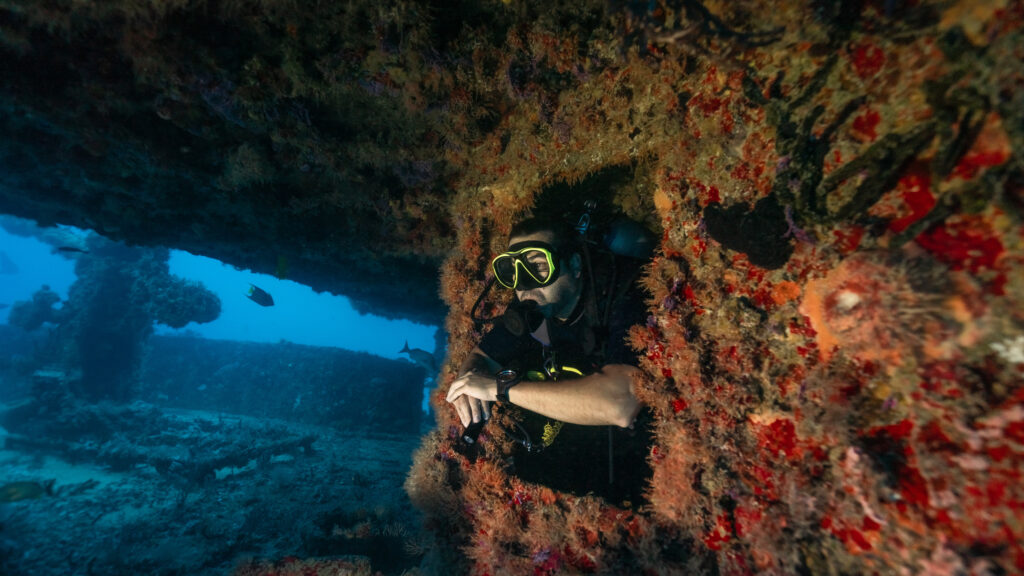What is Hypoxia when Scuba Diving?

Hypoxia, defined as a deficiency of oxygen in the body, is a significant concern for scuba divers, as it can impair vital bodily functions, reduce consciousness, and lead to life-threatening conditions. This medical issue becomes especially relevant in the context of scuba diving, where a diver’s environment and the unique breathing conditions can increase the likelihood of insufficient oxygen levels. Hypoxia is not always immediately apparent, but recognizing and understanding its causes, symptoms, and prevention strategies can help divers stay safe underwater.
What is Vasoconstriction?

Vasoconstriction is the process by which blood vessels narrow due to the contraction of muscular walls in the vessels, primarily small arteries and arterioles. This biological phenomenon is significant in regulating blood flow and blood pressure throughout the body. For scuba divers, understanding vasoconstriction is crucial because it directly impacts how their bodies react to the underwater environment, including the cold temperatures and increased pressure that are often encountered during a dive.
What is an Electro Galvanic Fuel Cell (EGFC)?

An electro galvanic fuel cell (EGFC) is a type of electrochemical sensor used extensively in scuba diving equipment for oxygen monitoring. It operates based on the principle of generating an electrical current through a chemical reaction between oxygen and a fuel, typically a metal like lead or zinc. The current produced is directly proportional to the amount of oxygen present, making EGFCs crucial for ensuring safe breathing gas mixtures in underwater environments. This entry delves into the fundamental principles, historical development, technical specifications, applications in scuba diving, maintenance practices, and regulatory considerations of electro galvanic fuel cells.
What is the Maximum Operating Depth?

Maximum Operating Depth (MOD) is a critical concept in the field of scuba diving. It refers to the deepest depth at which a particular gas mixture can be used safely without the diver experiencing oxygen toxicity. Understanding and adhering to the MOD is essential for ensuring diver safety and preventing potentially life-threatening conditions. MOD varies depending on the gas mixture being used and is influenced by the partial pressure of oxygen within the breathing gas. By comprehending the significance of MOD, divers can plan their underwater excursions more effectively and reduce the risks associated with diving to greater depths.
What Are Gaseous Impurities?

What Are Gaseous Impurities? In the world of scuba diving, ensuring the purity of breathing gas is paramount. Gaseous impurities refer to any unwanted substances present in the air or gas mixtures used by divers. These impurities can include various gases that, if inhaled in significant quantities, pose serious health risks. Maintaining the highest standard […]
What is Mixed Gas?

Mixed gas, in the context of scuba diving, refers to breathing gases other than air, which are used to extend bottom time, reduce decompression obligations, and manage the risks associated with deep diving. These mixtures can include combinations of oxygen, nitrogen, helium, and other inert gases, tailored to specific diving conditions and depths. By using mixed gases, divers can safely reach greater depths and explore environments that would otherwise be inaccessible due to the limitations of breathing air alone.
What is Hyperventilation?

Hyperventilation refers to a state of rapid or deep breathing that exceeds the body’s need for oxygen. This condition leads to a significant decrease in carbon dioxide levels in the blood, causing various physiological effects. Understanding hyperventilation is crucial for scuba divers as it can profoundly impact their safety and overall experience underwater. Divers need to be aware of the causes, effects, and preventive measures related to hyperventilation to ensure safe and enjoyable diving experiences.
What is Laryngospasm?

Laryngospasm is a sudden, involuntary contraction of the vocal cords that can temporarily block airflow to the lungs. In the context of scuba diving, this condition is particularly hazardous because it can occur unexpectedly and lead to life-threatening situations underwater. Understanding laryngospasm is crucial for divers, as it directly impacts their safety and ability to respond effectively to underwater emergencies.
What is a Gas Fraction?

In the context of scuba diving, a gas fraction refers to the proportion of each gas component within a breathing gas mixture. Understanding gas fractions is crucial for divers to ensure safe and efficient breathing under water. The significance of gas fractions cannot be overstated, as they directly influence dive planning, physiological effects on the body, and overall safety. By grasping the fundamentals of gas fractions, divers can make informed decisions that enhance their underwater experience while minimizing risks.
What is Ingassing?

Ingassing refers to the process by which gases dissolve into the body’s tissues and blood during scuba diving. This process is crucial to understand because it affects how divers must manage their time underwater and the ascent to the surface to avoid serious health risks. The term “ingassing” is often used in conjunction with its counterpart, “outgassing,” which describes the release of gases from the body. Both processes are central to diving physiology and safety, playing a vital role in dive planning and execution.
